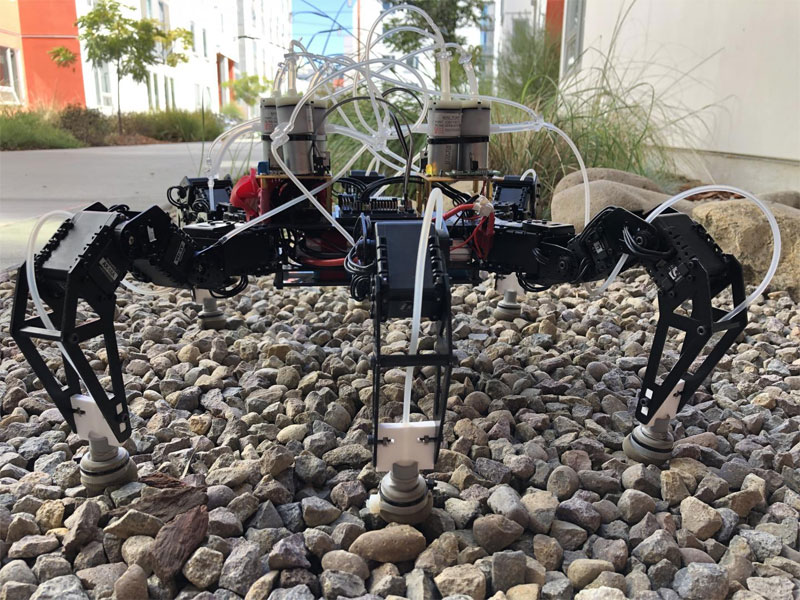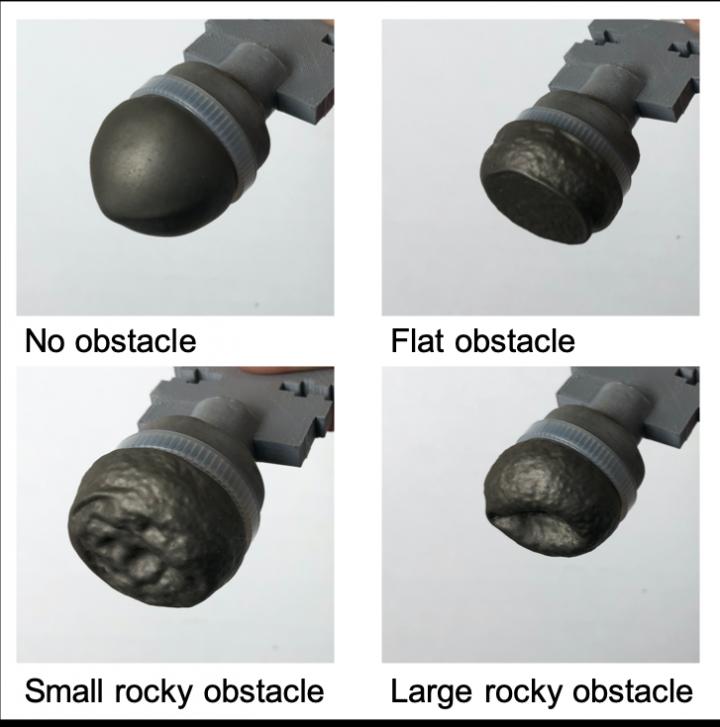
8th June 2020 Robots with flexible feet walk 40% faster Researchers from the University of California San Diego (UCSD) have developed flexible feet that can help robots walk up to 40% faster on uneven terrain such as pebbles and wood chips. The work has applications for search-and-rescue missions, as well as space exploration. "Robots need to be able to walk fast and efficiently on natural, uneven terrain, so they can go everywhere humans can, but maybe shouldn't," said Emily Lathrop, the study's first author and a PhD student in the Jacobs School of Engineering at UCSD. The researchers are presenting their breakthrough at the RoboSoft conference, taking place virtually from now until 15th July.
"Usually, robots are only able to control motion at specific joints," said Michael T. Tolley, a professor in the Department of Mechanical and Aerospace Engineering at UCSD and senior author of the paper. "In this work, we showed that a robot that can control the stiffness, and hence the shape, of its feet outperforms traditional designs and is able to adapt to a wide variety of terrains." The feet are flexible spheres made from a latex membrane filled with coffee grounds. This enables faster movement and a better grip, thanks to a mechanism known as "granular jamming" that allows granular media (in this case, the coffee grounds) to alternate between behaving like a solid and behaving like a liquid. When the feet hit the ground, they firm up, conforming to the ground underneath and providing solid footing. They then unjam and loosen up when transitioning between steps. The support structures help the flexible feet remain stiff while jammed.
The feet were installed on a commercially available hexapod robot. Researchers designed and built an on-board system to generate negative pressure to control the jamming of the feet, as well as positive pressure to unjam the feet between each step. As a result, the feet can be actively jammed, with a vacuum pump removing air from between the coffee grounds and stiffening the foot. But the feet can also be passively jammed, when the weight of the robot pushes the air out from between the coffee grounds inside, causing them to stiffen. "The natural world is filled with challenging grounds for walking robots – slippery, rocky, and squishy substrates all make walking complicated," said Nick Gravish, a professor in the UCSD's Department of Mechanical and Aerospace Engineering and study co-author. "Feet that can adapt to these different types of ground can help robots improve mobility." The researchers are continuing to refine their concept. Next steps will include incorporating soft sensors on the bottom of the feet to allow an electronic control board to predict what kind of ground the robot is about to step on, and whether a foot needs to be jammed actively or passively.
Comments »
If you enjoyed this article, please consider sharing it:
|








